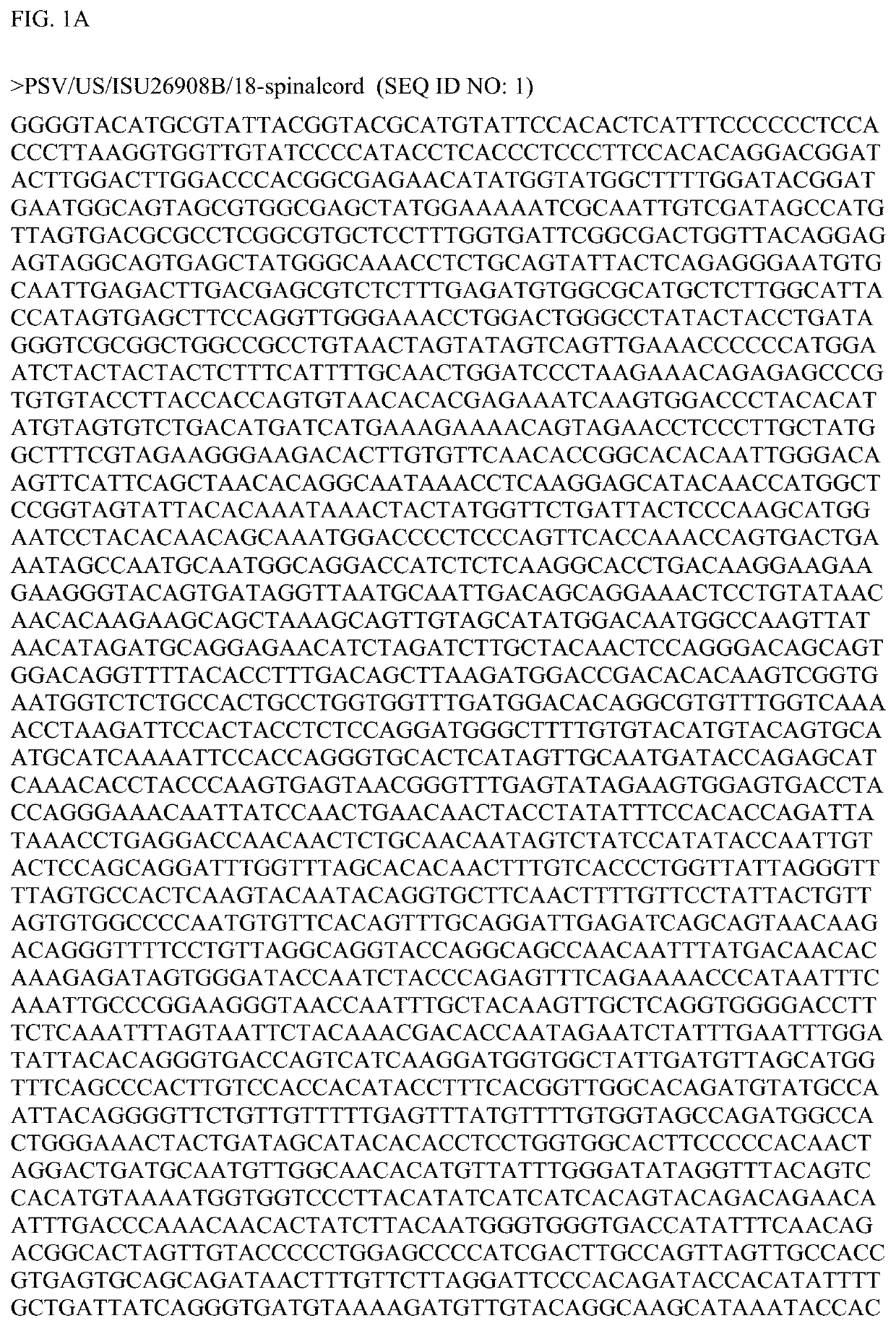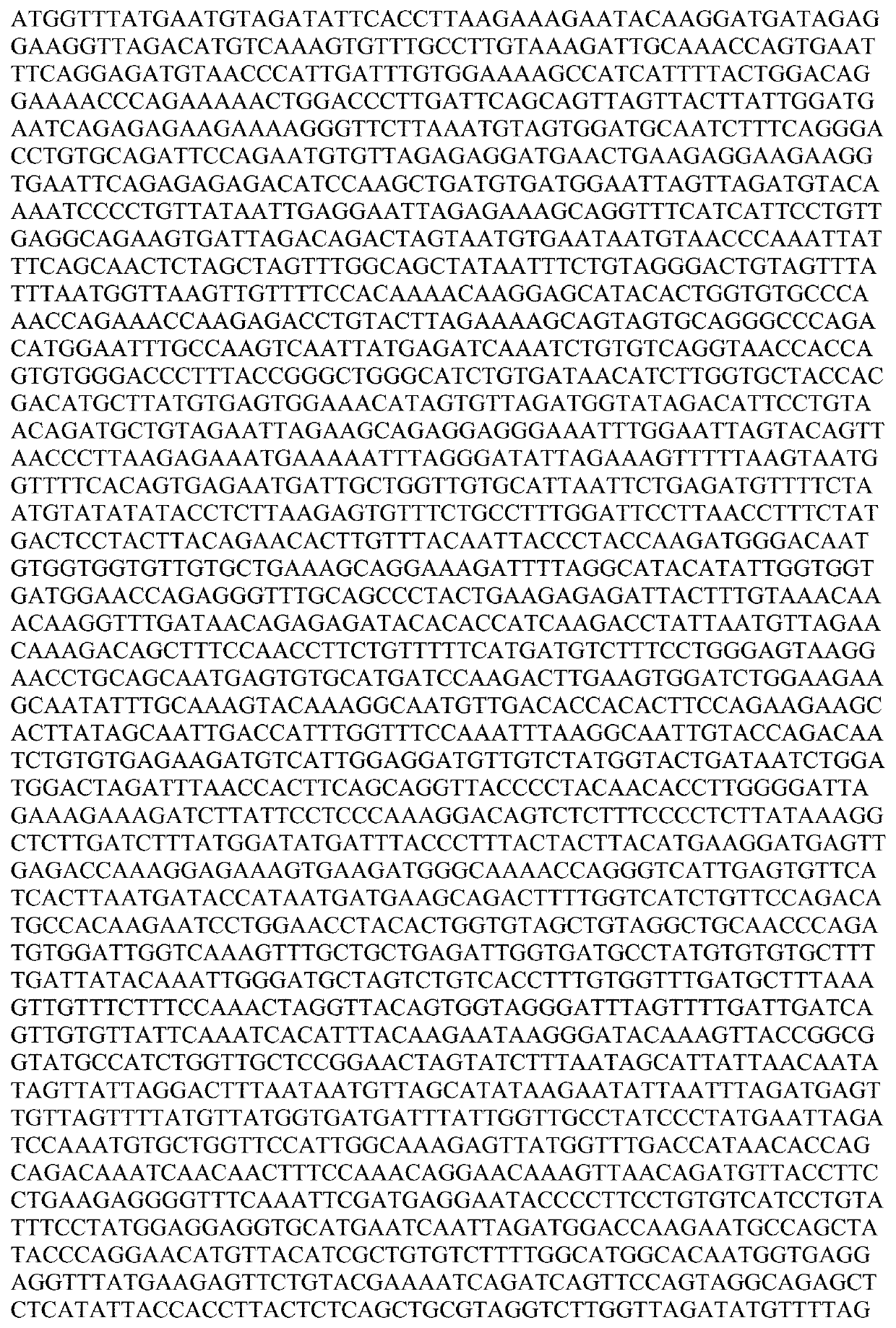Isolation and characterization of porcine sapelovirus strain
- Summary
- Abstract
- Description
- Claims
- Application Information
AI Technical Summary
Benefits of technology
Problems solved by technology
Method used
Image
Examples
example 1
[0179]As no strain has yet been adopted for a purified cell culture system, prototype strains had to be first isolated. For initial isolation, two, seven-week-old pigs (A and B) exhibiting from limb ataxia were euthanized and spinal cord samples were sent for general diagnostics for gross pathology, histopathology, and ancillary diagnostics using standard diagnostic techniques.
[0180]The gross pathology of the spinal cord samples showed no grow lesions along the spinal cords, muscles or bone of submitted spinal columns. The histopathology showed that both pigs A and B had nonsuppurative myelitis. The ancillary diagnostics tests showed both pigs A and B had PSV in both of their spinal cords at clinically relevant levels by real time PCR. Additionally, pig A may have had a low amount of porcine teschovirus (PTV) as determined by real time PCR, while pig B may have had a low amount of Steptococcus suis as determined by culture followed by hematoxylin and eosin assays.
[0181]These results...
example 2
[0182]To create the adapted isolate, six different strains, US / ISU26908B / 18; US / ISU20472B; US / ISU61750A; US / ISU61750G; US / ISU61750F; and US / ISU66822, extracted from brain or spinal cord were grown on different cell lines, ST, PK-15, and Vero cells. Each strain was grown on each cell line for a total of 18 combinations.
[0183]The combinations were made by prepping each tissue sample, and then filtering 200 μL onto each cell line and incubated at 36° C. in a 5% CO2 atmosphere for four hours. After 4 hours, cell lines were washed and then incubated in 1 mL MEM supplemented with 10% fetal bovine serum (FBS) and L-glutamate. The different strain by cell type combinations were then passaged with just MEM without any supplements. Part of passage 2 was assayed by real time PCR for the presence of strains on each cell type, while the rest was used for future passages.
[0184]Strains US / ISU26908B / 18 and US / ISU66822 showed presence on each of the cell lines while US / ISU61750A showed a low level o...
example 3
[0188]As passaging viruses during cell culture may result in changes to their sequence, it is important to determine if after long passages the genomes of the virus remains similar to the genome of the prototype.
[0189]The complete genomes of strain US / ISU26908B / 18 was determined. The determined genomic sequences of virus passage 7 on ST cells is 7,556 nt in length, which remained 99.9% identical to the virus sequence determined from the original spinal cord tissue. This indicate this virus isolate is genetically stable on ST cell line.
[0190]The genome of strain US / ISU26908B / 18 at passage 7 varied from the isolated strain throughout the polypeptide. Differences were one insertion and five single nucleotide polymorphisms (SNPs) The insertion was a 3-nt “TTT” at position 3,006. The SNPs include a G to A at position 1,318, an A to G at position 2,360, a C to T at position 2,793, an A to G at position 4,154, and a G to A at position 6,115.
[0191]As US / ISU26908B / 18 is genetically stable on...
PUM
| Property | Measurement | Unit |
|---|---|---|
| Length | aaaaa | aaaaa |
| Therapeutic | aaaaa | aaaaa |
| Strain point | aaaaa | aaaaa |
Abstract
Description
Claims
Application Information
 Login to View More
Login to View More - R&D
- Intellectual Property
- Life Sciences
- Materials
- Tech Scout
- Unparalleled Data Quality
- Higher Quality Content
- 60% Fewer Hallucinations
Browse by: Latest US Patents, China's latest patents, Technical Efficacy Thesaurus, Application Domain, Technology Topic, Popular Technical Reports.
© 2025 PatSnap. All rights reserved.Legal|Privacy policy|Modern Slavery Act Transparency Statement|Sitemap|About US| Contact US: help@patsnap.com



